Discover 11 hidden attractions, cool sights, and unusual things to do in Redlake Meadows & Hoggs Moor (United Kingdom). Don't miss out on these must-see attractions: Jamaica Inn, Stowe's Hill, and Rough Tor. Also, be sure to include The Pipers in your itinerary.
Below, you can find the list of the most amazing places you should visit in Redlake Meadows & Hoggs Moor (England).
Table of Contents
Jamaica Inn
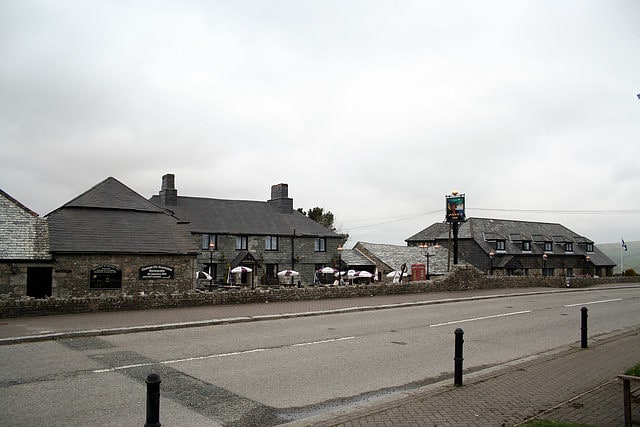
Hotel. The Jamaica Inn is a traditional inn on Bodmin Moor in Cornwall in the UK, which was built as a coaching inn in 1750, and has a historical association with smuggling. Located just off the A30, near the middle of the moor close to the hamlet of Bolventor, it was originally used as a staging post for changing horses. The 1,122 feet high "Tuber" or "Two Barrows" hill, is close by.
The inn was the setting for Daphne du Maurier's 1936 novel Jamaica Inn, about the nocturnal activities of a smuggling ring, "portraying a hidden world as a place of tense excitement and claustrophobia of real peril and thrill." In the novel, it was transformed into a rendezvous and warehouse for smuggling that was solely the home of the landlord and his wife. The novel has been adapted into various media, most famously an eponymous 1939 film directed by Alfred Hitchcock. However, the inn itself has never actually been used as a filming location.
The inn is also referenced in "Jamaica Inn", a song by Tori Amos from her album The Beekeeper (2005), written while she was driving along the road of the Cornwall cliffs, and inspired by the legend she had heard of the inn.[1]
Address: Bolventor, Launceston PL15 7TS, Redlake Meadows & Hoggs Moor
Stowe's Hill

Stowe's Hill is an elongated hill, 381 metres high, located on the eastern edge of Bodmin Moor in the county of Cornwall, England.
Stowe's Hill is a prominent granite ridge located about 1500 metres north of Minions, the highest village in Cornwall. It is dominated by Stowe's Pound, a huge tor enclosure comprising two massive stone-walls. The smaller enclosure surrounds the tors at the southern end of the hill; the larger one encircles the rest of the ridge. At the southern end is a large, disused quarry, but the hill is best known as the site of the Cheesewring, the extraordinary granite formation that gave the quarry its name.
Inside Stowe's Pound are two Bronze Age cairns, a stone round house and over 100 house platforms. The site is thought to be Neolithic or Bronze Age and connected with other settlements and ritual monuments in the vicinity.[2]
Rough Tor

Tor in England. Rough Tor, or Roughtor, is a tor on Bodmin Moor, Cornwall, United Kingdom. The site is composed of the tor summit and logan stone, a neolithic tor enclosure, a large number of Bronze Age hut circles, and some contemporary monuments.[3]
The Pipers

The Pipers are a pair of standing stones near The Hurlers stone circles, located on Bodmin Moor near the village of Minions, Cornwall, UK. They share the name with another pair of standing stones near the Merry Maidens to the south of the village of St Buryan, also in Cornwall.[4]
Siblyback Lake

Reservoir in England. Siblyback Lake is a reservoir on the edge of Bodmin Moor in Cornwall, England, UK.
It is one of 12 areas in Cornwall designated as an Area of Outstanding Natural Beauty. and is managed by the South-West Lakes Trust.
The dam blocks a small tributary of the River Fowey. It was built in 1968 and at full capacity the lake holds over 3 billion litres of water. The reservoir is used to buffer the water levels in the River Fowey in the summer. The water is collected downstream for domestic drinking water at the Restormel treatment works.
In addition to watersports facilities, a 3.2-mile (5.1 km) circular path runs adjacent to the lake.
The lake has a resident population of brown trout and is regularly stocked with rainbow trout and blue trout.[5]
Address: Common Moor, PL14 6ER Liskeard
Brown Willy
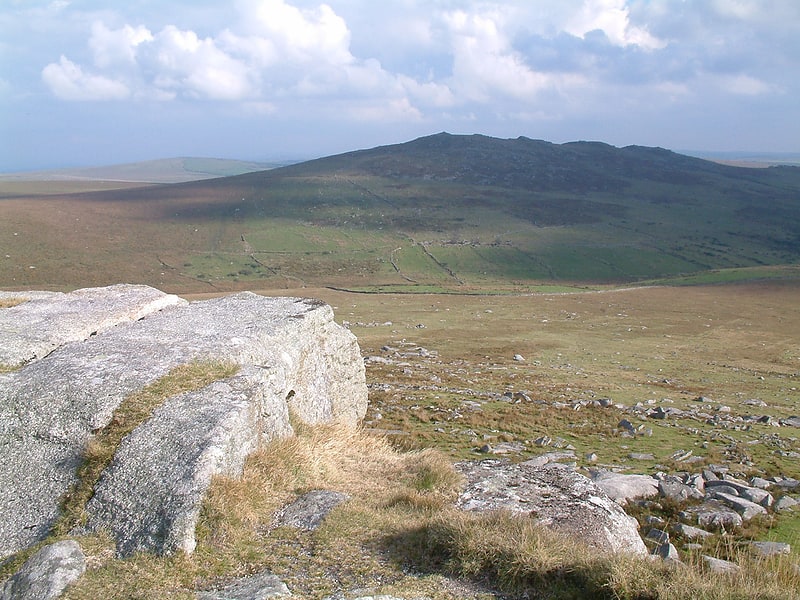
Hill in England. Brown Willy is a hill in Cornwall, England, United Kingdom. The summit, at 1,378 feet above sea level, is the highest point of Bodmin Moor and of Cornwall as a whole. It is about 2+1⁄2 miles northwest of Bolventor and 4 miles southeast of Camelford. The hill has a variable appearance that depends on the vantage point from which it is seen. It bears the conical appearance of a sugarloaf from the north but widens into a long multi-peaked crest from closer range.[6]
St Nonna's Church
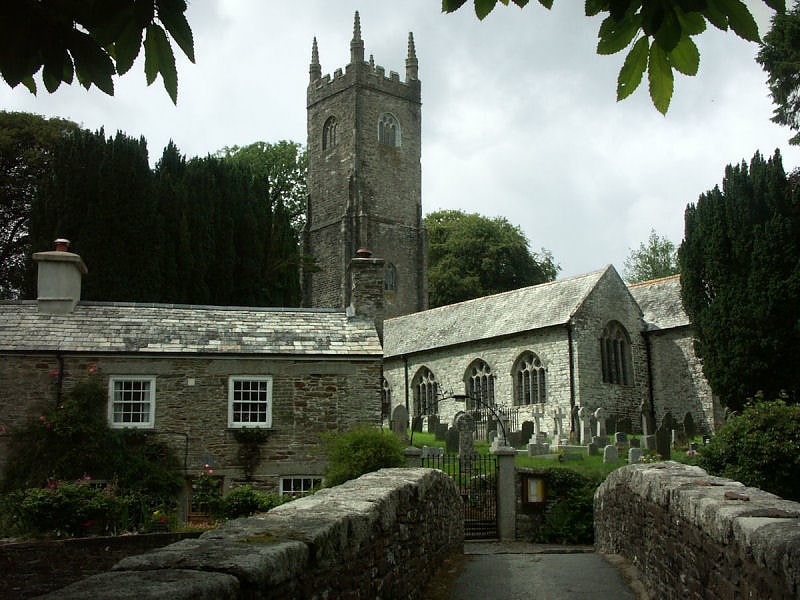
Church in Altarnun, England. St Nonna's Church, also known as the Cathedral of the Moors, is the second largest church on Bodmin Moor, Cornwall, located in the village of Altarnun. The dedication is to Saint Non or Nonna, who was the mother of St David. The church is mentioned in Daphne du Maurier's Jamaica Inn; it is the church in which the evil vicar of Altarnun Francis Davey depicts himself in a painting as a wolf while the members of his congregation have the heads of sheep.
The church is an active Anglican parish church in the deanery of Trigg Major, the archdeaconry of Bodmin, and the diocese of Truro. Its benefice is united with those of Saint Sidwell and Saint Gulval, Laneast, and Saint Clederus, St Clether. The church is recorded in the National Heritage List for England as a designated Grade I listed building.[7]
Bodmin Moor
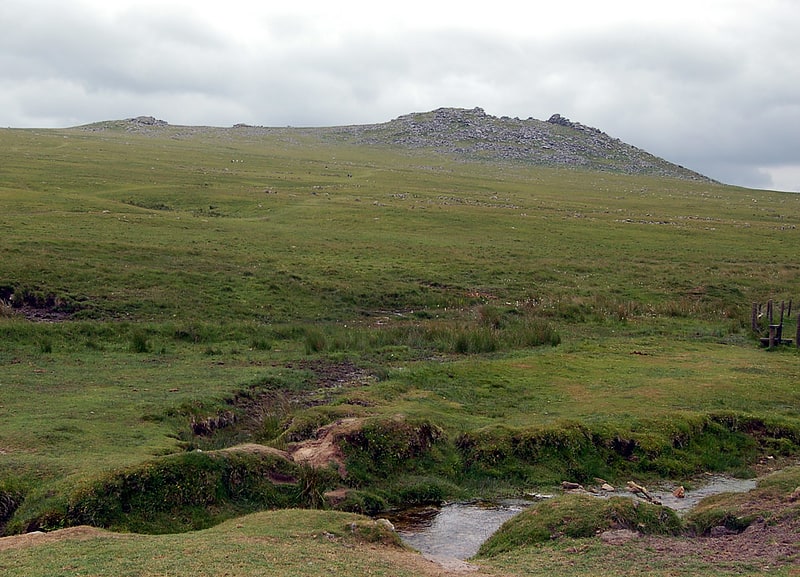
Bodmin Moor is a granite moorland in north-eastern Cornwall, England. It is 208 square kilometres in size, and dates from the Carboniferous period of geological history. It includes Brown Willy, the highest point in Cornwall, and Rough Tor, a slightly lower peak. Many of Cornwall's rivers have their sources here. It has been inhabited since at least the Neolithic era, when primitive farmers started clearing trees and farming the land. They left their megalithic monuments, hut circles and cairns, and the Bronze Age culture that followed left further cairns, and more stone circles and stone rows. By medieval and modern times, nearly all the forest was gone and livestock rearing predominated.
The name Bodmin Moor is relatively recent. An early mention is in the Royal Cornwall Gazette of 28 November 1812. The upland area was formerly known as Fowey Moor after the River Fowey, which rises within it.[8]
St Protus and St Hyacinth's Church
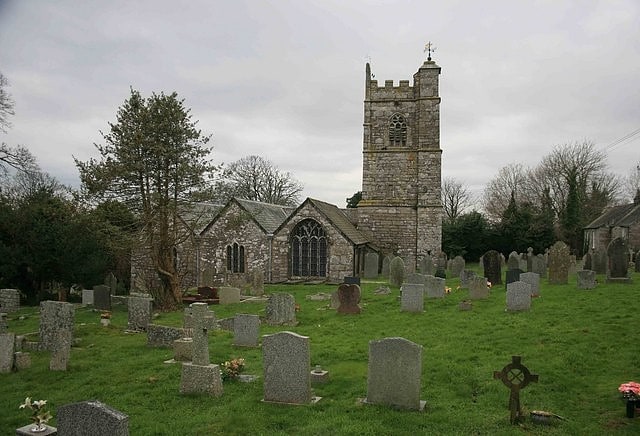
Episcopal church in Blisland, England. St Protus and St Hyacinth's Church, Blisland is a Grade I listed parish church in the Church of England in Blisland, Cornwall, England, UK.[9]
Showery Tor
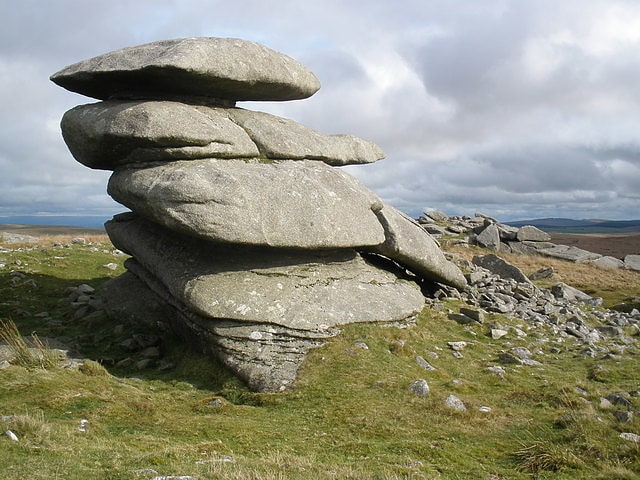
Tourist attraction in Saint Breward, England. Showery Tor is a rocky outcrop on a ridge-top approximately 0.6 kilometres north of the Rough Tor summit, near Camelford on Bodmin Moor in Cornwall. It is notable for its rock formations and prehistoric monuments.
The Tor is a prominent landmark for a wide area. It consists of a natural 5-metre (16 ft) outcrop of weathered granite enveloped by a giant man-made ring cairn of stones, each up to 30 metres (98 ft) in diameter and 1.2 metres (3.9 ft) high. Christopher Tilley has estimated the height of the cairn on which the outcrop stands to be 3 metres (9.8 ft).
The site was thought to have been a religious focal point, possibly from the Neolithic or Bronze Age period. No excavations have been recorded at the site, and it is not known if any burials were made there.
The granite outcrop is reminiscent of the Cheesewring and made of individual blocks on underlying outcrops formed by erosion along horizontal fractures in the granitic mass. Aerial photography has revealed more about the layout of the structures on Showery Tor and it stands out as the only natural formation to have been used in this way by the cairn designers.[10]
King Arthur's Hall

Tourist attraction in England. King Arthur's Hall is a megalithic enclosure on Bodmin Moor in Cornwall, England. It is thought to be a late Neolithic or early Bronze Age ceremonial site.[11]